
In this blog, you will learn what is Causal Talk (CT) and Causal Talk in the Emotional Experience (CTEE), how to implement these strategies, and why your own well-being is important to that of the children around you.
Did you know that any time you talk with children about their own feelings, the feelings of others, or even the feelings of their favorite TV or book characters, you are supporting their development of emotional intelligence skills? Did you also know that when you help children calm down when they are upset, you are laying the foundation for emotion regulation and problem-solving skills? These interactions that we probably have more often than we think are incredibly important for children’s emotional development, and they even have their own names! So, let’s dive into the world of Causal Talk (CT) and Causal Talk in the Emotional Experience (CTEE) to learn more about these strategies and how you can continue using them at home, at school, and anywhere in between.
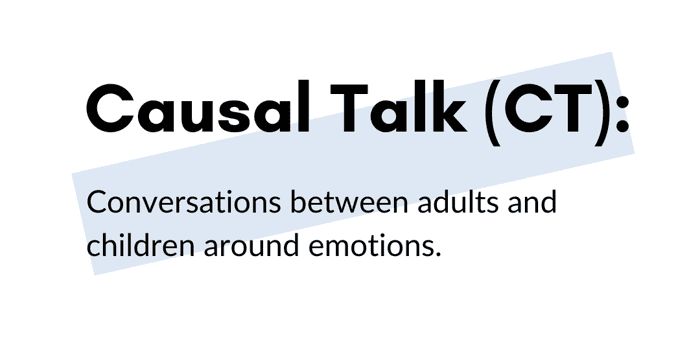 Causal Talk, or CT, refers to the important conversations about emotions between children and adults. CT happens during regulated moments to help children learn more about their own emotions and the emotions of others. By facilitating CT, adults can help children build their emotion vocabulary, reflect on how they responded emotionally in past situations, and build empathy and social competence by talking about the emotions of others and trying to think of ways to help others feel better.
Causal Talk, or CT, refers to the important conversations about emotions between children and adults. CT happens during regulated moments to help children learn more about their own emotions and the emotions of others. By facilitating CT, adults can help children build their emotion vocabulary, reflect on how they responded emotionally in past situations, and build empathy and social competence by talking about the emotions of others and trying to think of ways to help others feel better.
Adults can facilitate CT by asking children open-ended questions that align with the four quadrants of emotional intelligence, which include emotional recognition and identification, emotional understanding, emotional expression, and emotional regulation. CT can be facilitated in various environments and situations, including during story time, lunchtime, curriculum activities, and while children are playing alone or with friends.

It is more than likely that you have already facilitated Causal Talk (CT) without even knowing it!
Any time you ask a question or narrate an observation about children’s emotions or the emotions of others, you are engaging in CT and supporting their development of emotional intelligence skills.
Let's explore some examples of what CT looks like together.
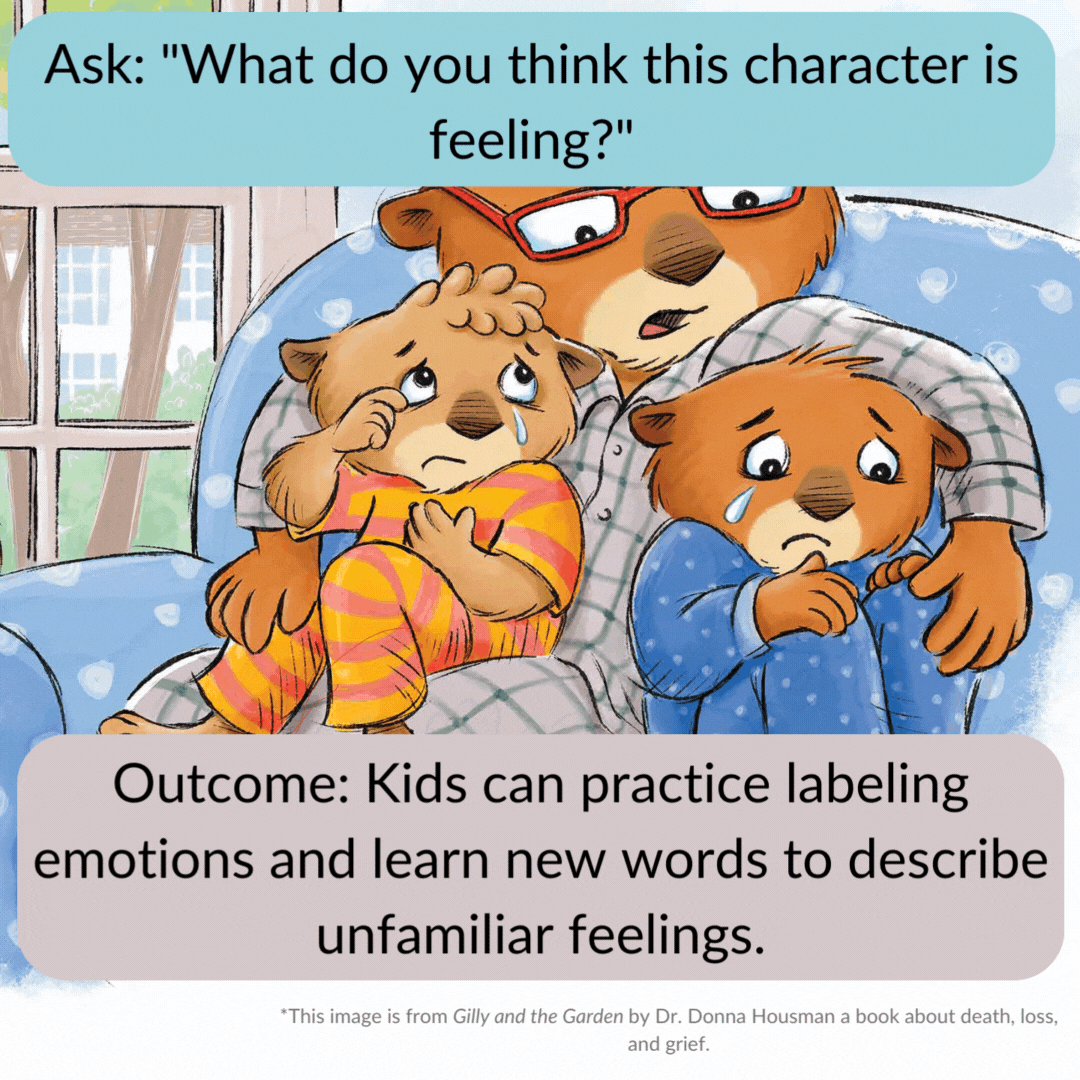
Imagine you are reading a story with a child. You can help build their emotion vocabulary and support their emotional identification by asking:
|
“What about the character’s face or body lets you know they are feeling this way?” |
Outcomes: Asking questions like these guides children to make connections between emotions and their associated facial expressions and body language. They also create opportunities for children to practice labeling emotions that are familiar or learn new words to describe unfamiliar feelings.
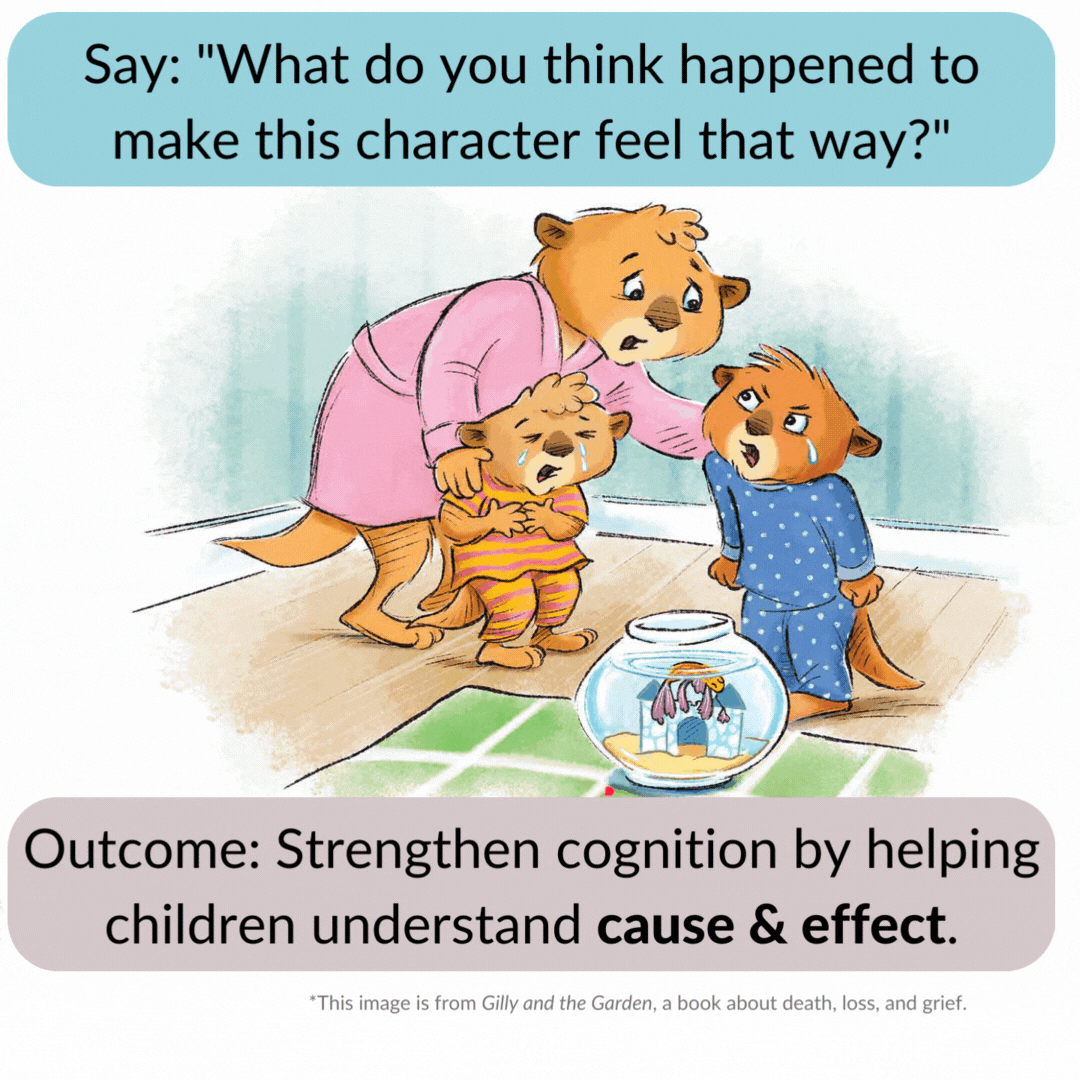
You can prompt reflection and support children’s emotional understanding by asking:
|
“Has anything like this ever happened to you?” |
Outcomes: Questions like these strengthen cognitive skills like cause and effect by helping children connect emotions to a cause. They can also help children process challenging emotional experiences like sadness, loneliness, or anger in a safe environment out of the heat of the moment to better understand them.
.png?quality=low&width=1080&height=1080&name=tip%201%20model%20the%20behavior%20you%20want%20to%20see%20(7).png)
You can build children’s social competence while supporting their emotional expression by asking questions like:
|
“Is hitting friends an okay thing to do? What else could the character do instead?” |
Outcomes: A big part of emotional expression is finding ways to communicate what we are feeling in constructive, age-appropriate ways. Asking questions like these create opportunities for children to identify inappropriate behaviors and think of better ways to let others know what they are feeling that they can use in their own lives.
.png?quality=low&width=1080&height=1080&name=tip%201%20model%20the%20behavior%20you%20want%20to%20see%20(6).png)
You can also build children’s social competence while supporting their emotion regulation and empathy skills by asking:
|
“What helps you feel better when you feel this way?” “Is there anyone around who could help this character feel better?” |
Outcomes: Each of these questions opens the door for critical thinking through an empathetic lens. The first question prompts children to think about strategies the characters can use to try and feel better. The second allows them to reflect on their own emotional experiences and apply what helps them to an emotional situation involving another person. Lastly, even adults need help sometimes when we experience big feelings. Find opportunities for children to identify the helpers in every situation, even imaginary ones.
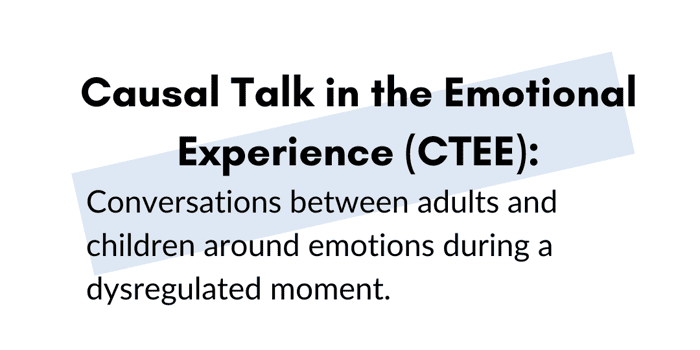 Similarly to CT, Causal Talk in the Emotional Experience, or CTEE, also involves important conversations about emotions between children and adults but during dysregulated moments. In moments like these, children need emotional support from adults to help them manage their heightened emotions and bring them back down to a more regulated state.
Similarly to CT, Causal Talk in the Emotional Experience, or CTEE, also involves important conversations about emotions between children and adults but during dysregulated moments. In moments like these, children need emotional support from adults to help them manage their heightened emotions and bring them back down to a more regulated state.
When engaging in CTEE, the approach of the adult is very important. Emotionally dysregulated children are unable to think logically about what is happening around them and need steady guidance, understanding, and reassurance that someone is there to help them. But what does this look like?
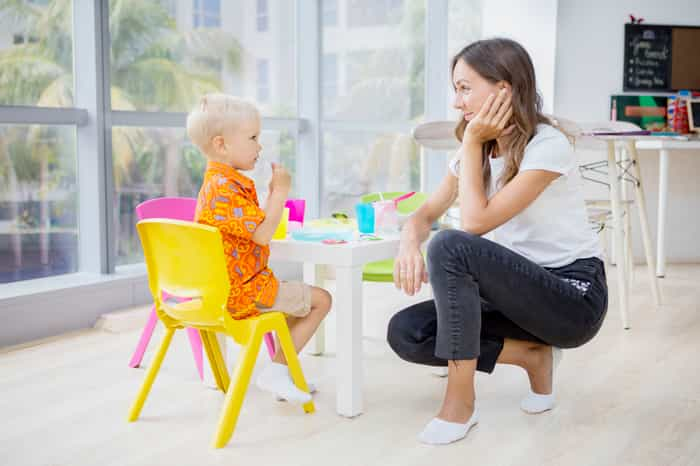
Start first by meeting children where they are physically and emotionally. Get down on their level and use a calm tone of voice to acknowledge and label their emotions. Avoid raising your voice over children’s screaming or crying, as this can escalate the situation and further heighten their emotions. Provide reassurance that they are safe, you are there to help them and talk about things when they are ready, and that they first need to calm their body down. For example:
|
|

When emotions become heightened, you can model regulation strategies like taking deep breaths to engage in co-regulation, or if the child isn’t too dysregulated, you can try offering calm-down choices like taking space, using a calm-down bottle, looking at a family photo, or reading a book. For example:
|
|
Take a look at our recommendations for setting up a cozy corner.
CTEE highlights just how important it is for educators and caregivers to have their own tools of emotional intelligence and the ability to manage their own heightened feelings. Tantrums, meltdowns, and uncontrollable crying can trigger strong feelings within ourselves that can make a heightened situation worse if we don’t have our own strategies in place.
This is also why emotional regulation or co-regulation is so important when facilitating CTEE. This helps children and adults manage their big feelings in the heat of the moment. Being able to help children through their challenging emotional experiences to the best of your ability is dependent on your own emotional regulation skills.
So, before meeting children where they are in the heat of the moment, remember to check in with yourself. Acknowledge what you are feeling, take a few deep breaths on your own, and model the same for the children who need your support. The same tools that help you will serve as a model for them and pave the way for their own emotion knowledge and regulation.
These Posts on SEL
Housman Institute, LLC
831 Beacon Street, Suite 407
Newton, MA 02459
info@housmaninstitute.org
(508)379-3012
Explore
Our Products
Legal
Connect
Contact
Join our Mailing List!
Subscribe to receive our newsletter, latest blogs, and SEL resources.
We respect and value your privacy.
No Comments Yet
Let us know what you think